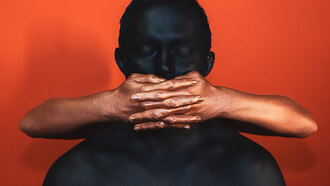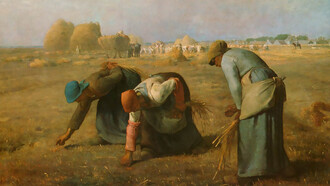Theyyam is a traditional ritualistic performance in northern Kerala, honoring gods, ancestors, and local deities. The performer is believed to become possessed by the deity, creating a direct link between the divine and devotees. With over 400 different forms, performed in shrines called Kavus, this thousand-year-old ritualistic art form is performed by specific classes or communities. It is believed that the performed in sacred groves and temples, purifying the space and bringing blessings. The vibrant costumes, intricate makeup, and powerful dance movements create a sacred atmosphere, embodying the spiritual heritage of the local communities.
The Theyyam movement led to a unique condition in Northern Kerala's caste communities, with the number of Theiyyas increasing as the position of Theiyya (caste) spread across households and the nation. This art form ties castes, such as Malayan, Panan, Vanna, Velan, Kopalan Mavilan, Nalkitthaya, Chinkathan, Tan, Munnutan, and other heirs who tied the Theyyam. The roots of Theyyam can be traced back to ancient tribal cultures and folklore traditions in the Malabar region. They serve as a sacred offering and means to seek blessings, protection, and guidance from divine entities. Theyyam ceremonies often take place in sacred spaces and involve rituals and priests.
On the other hand, Theyyam is a communal celebration, often organized by local communities, fostering unity and cultural pride. The performances feature intricate rituals, costumes, and music, showcasing the divine attributes of the deities. Performers visit locations associated with mythology and legends, highlighting the harmonious relationship between humans and the environment. Theyyam's significance extends beyond entertainment, as it is deeply intertwined with Kerala's cultural, social, and spiritual fabric. It serves as a bridge between the past and present, preserving the folklore, mythology, and spiritual heritage of the Malabar area.
Gender roles in Theyyam
Theyyams which represent females, celebrate the relationship between women and nature through the revival of ancient rituals centered on goddess worship, the moon, animals, and the female reproductive system. They celebrate an era in prehistory when nature was symbolized by pregnant female figures, trees, butterflies, and snakes. The scientific revolution of the seventeenth century degraded nature, and cultural ecofeminism aims to reclaim this association through political action and the revival of ancient rituals. Kerala's culture assumes trees have a significant role in Theyyam worship, with trees and natural objects playing significant roles. Theyyam is a direct interaction with God, known as the God's Dance, and maintains the pride of female goddesses as Kula devatha.
Costumes and songs
Theyattams involve stages of performance, starting with thottam songs, followed by vellattam, and finally theyyakkolam. Male gods have vellattam, while female goddesses have thottam. Thottam songs, recited to invoke the deity, consist of varavili, sthuthi', and sancharam.
The first part of the performance, known as thottam, is performed without makeup or costume, with a small red headdress worn. The dancer and drummers sing a ritual song about the myths and legends of the deity of the shrine, accompanied by folk musical instruments. After this, the dancer returns to the green room, resuming the ritual with makeup and costume.
Vellattam, a significant performance element, involves the performer wearing light makeup and costume, known as vellatukuri, with their face painting being a key aspect.
Theyyakkollams have unique characteristics, such as lengthy thottam songs and unique makeup and head-dresses. The performer transforms into the deity when wearing the headdress. The synthesis, known as 'mukhadarshanam,' occurs when the performer gazes into a small hand-held mirror, focusing on the transformed image of a divine being rather than their own reflection.
Bhagavathi theyyams, or female goddesses, are worshipped with varying makeup and costumes. They are known for their exceptional performance, wearing a sacred head-dress made of bamboo and coconut leaves. Mother goddesses are worshipped in three forms: Kaali, Chamundi, and Bhagavathi. They wear a forty-two-long bamboo stick headgear, vithanathara corset, oalakaathu ear panels, and pakkapaambu snakes. These goddesses have narratives of miserable events, illustrating the issue of gender discrimination. The four female goddesses are Muchilot Bhagavathi, Neeliyar Bhagavathi, Makkam Bhagavathi, and Thottumkara Bhagavathi, each narrating their life amidst societal cruelty.
In summary, the Theyyam is a symbol of respect for heroes who fight against societal injustice and uphold virtue. It is used in various plotlines to illustrate how caste and gender inequality are viewed in modern society. Neeli focuses on fighting against gender abuse, Varav explores how people are socialized about caste and gender from a young age, and Kaavakam urges minority cultures to unite against social evils by upholding their traditions and values. Theyyam is described as more like a god with human feelings than a regular person. Pambichi strikes against patriarchal society, destroying evils by the god of the underprivileged.
Society's image of women is influenced by ideals, stereotypes, and institutionalized roles. These images are often influenced by opinion and historical conditions. Ideals can be traced back to social strategies, interests, prudence, stereotypes, and psychological factors. These images serve as historical indices of social conditions, making them relevant in understanding the role and position of women.















